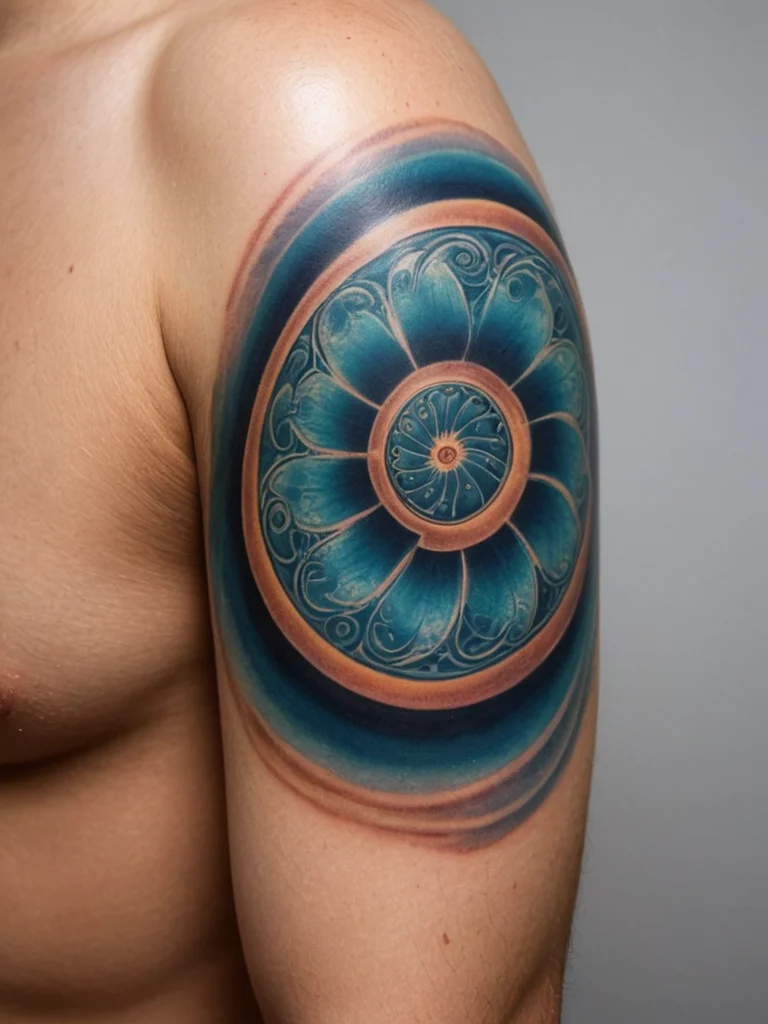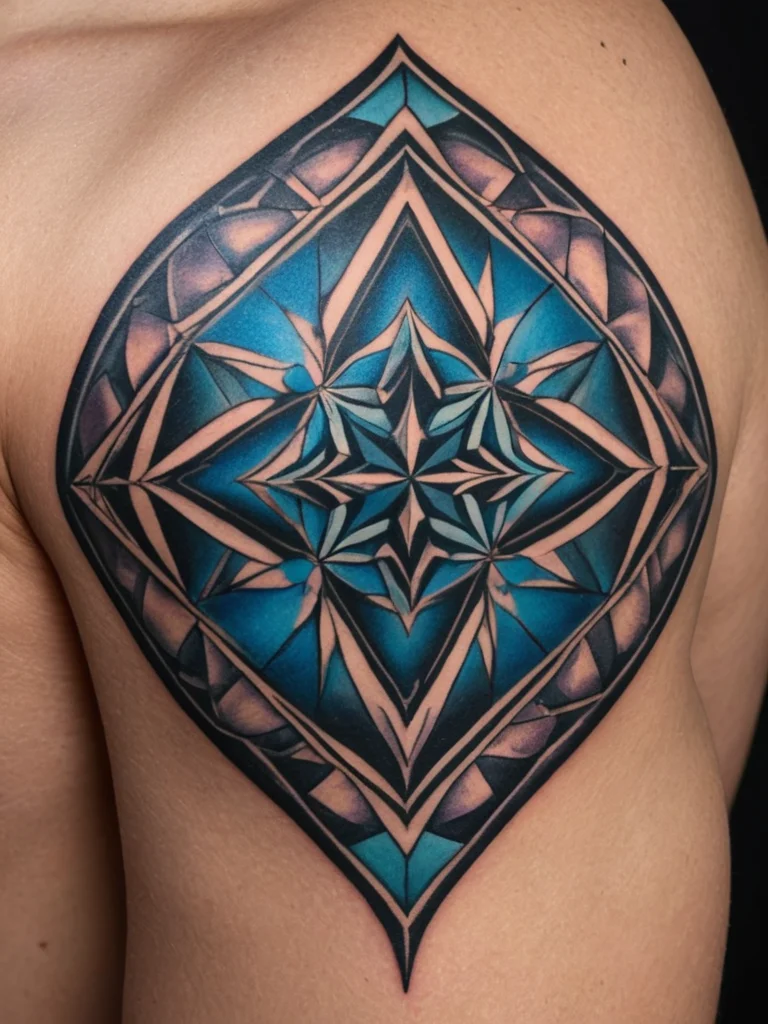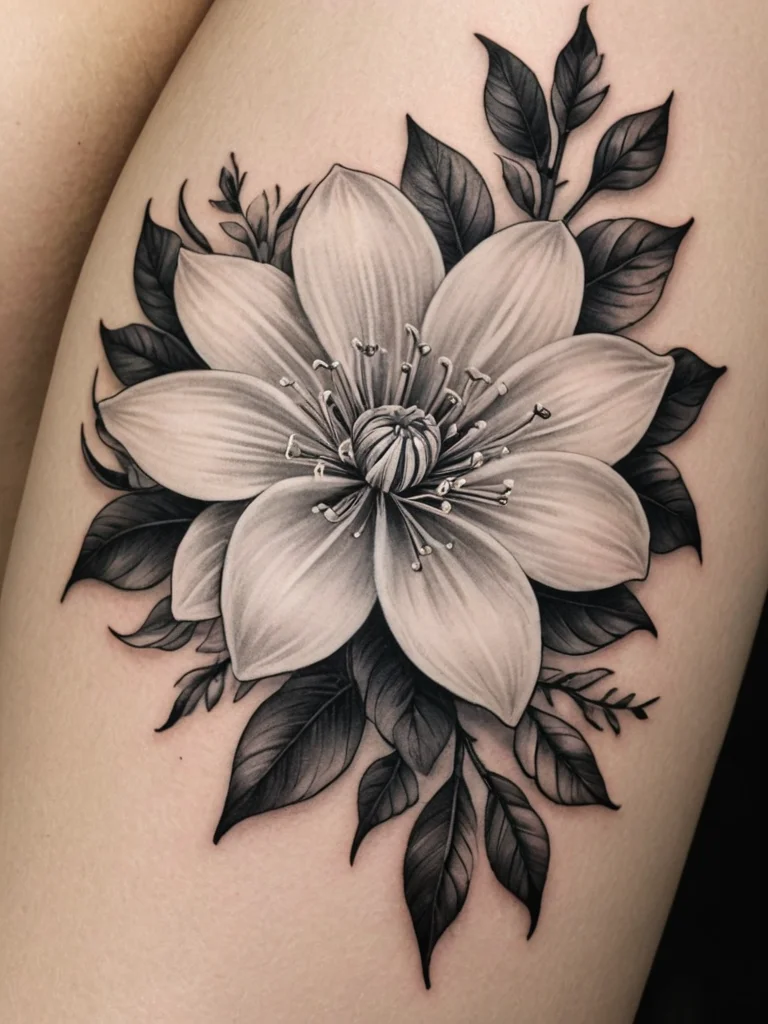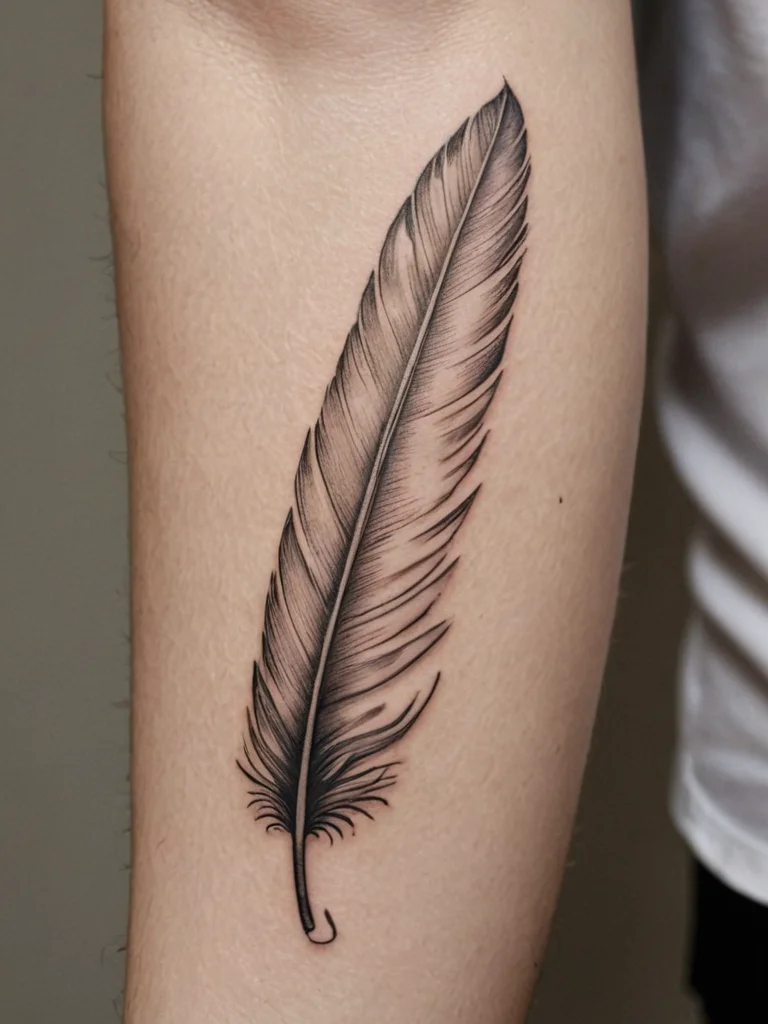The world of tattoos is constantly evolving, pushing the boundaries of what’s possible with body art. Beyond the traditional black and vibrant colors, there’s a fascinating realm of inks that offer a subtler, more magical aesthetic: UV and white ink tattoos. These aren’t your everyday designs; they reveal themselves under specific conditions, adding an element of surprise and intrigue to your skin. Whether you’re drawn to the ethereal glow of UV ink or the minimalist elegance of white ink, understanding how these unique mediums work is crucial before you commit to your next piece. Tattoo artists often see a surge in interest for these specialized inks, as clients seek ways to express themselves with a touch of the extraordinary.
Understanding UV and white ink: what makes them glow?

At their core, both UV and white ink tattoos rely on the specific properties of the pigments used to create them. Unlike traditional inks that absorb and reflect visible light in predictable ways, these specialized inks are designed to interact differently with light sources. UV (Ultraviolet) ink, as the name suggests, is formulated to be reactive under ultraviolet light, commonly known as blacklight. This means that in normal daylight or under standard room lighting, the tattoo might be barely visible, or appear as a faint white or light-colored mark. However, when exposed to a UV blacklight, the pigments within the ink absorb the ultraviolet radiation and re-emit it as visible light, causing the tattoo to ‘glow’. The intensity and color of this glow depend entirely on the specific pigments used in the ink formulation. Some UV inks glow in a single, vibrant color, while others can be formulated to react with different shades, creating a multi-colored effect under the blacklight. White ink tattoos, on the other hand, are distinct in their visibility under normal light conditions. While they are made with white pigment, their aesthetic is far from simply mimicking scarification. The magic of white ink lies in its subtlety. It heals to a softer, more diffused appearance compared to darker inks, creating a delicate, almost ethereal quality on the skin. Tattoo artists achieve this unique look by using high-quality white pigments, carefully applied to create designs that can range from bold outlines to intricate shading, all in a monochromatic, luminous white. The key difference lies in their primary mode of visibility: UV inks are designed for blacklight reveal, while white ink is intended for a softer, visible presence in everyday light.
The science behind UV tattoos: how they react to blacklights

The fascinating ‘glow’ of UV tattoos is a result of a phenomenon called fluorescence. The inks used contain special pigments, often derived from phosphors or fluorescent dyes, that have the unique ability to absorb energy from ultraviolet light waves. Ultraviolet light itself falls outside the spectrum of visible light for humans, meaning we can’t see it directly. However, when these UV-reactive pigments encounter UV radiation, they absorb its energy. This absorbed energy excites the electrons within the pigment molecules. As these excited electrons return to their normal energy state, they release the absorbed energy in the form of visible light. This re-emitted light is what creates the glowing effect you see under a blacklight. The specific color of the glow is determined by the chemical composition of the pigment. Different chemical compounds will absorb UV light and re-emit it at different wavelengths within the visible spectrum. For example, some inks might contain fluorescent dyes that emit a bright green or blue, while others might use pigments that produce pinks or yellows. It’s important to note that ‘UV ink’ is a broad term. Some inks are designed to be ‘invisible’ under normal light and only show up under UV light, while others have a visible color in regular light that then glows a different, often brighter, color under a blacklight. The ‘invisible’ varieties typically use pigments that don’t absorb or reflect much visible light, making them blend in with the skin tone. When the UV light hits them, their fluorescence mechanism kicks in, making them pop. The process is entirely safe, as the UV light source itself is typically a standard blacklight, similar to what you might find in clubs or for decorative purposes. The inks themselves are generally considered safe for tattooing, though it’s always recommended to ensure your artist uses reputable brands and has experience with these specialized materials. The longevity and vibrancy of the glow can vary depending on the ink quality, the artist’s technique, and how well the tattoo is cared for.
White ink tattoos: beyond simple scarification

White ink tattoos have carved out a unique niche in the tattoo world, appealing to those who desire a more subtle, sophisticated, and often minimalist aesthetic. Many people initially associate white ink with a look similar to scarification, where the healed ink might appear slightly raised or resemble a healed scar. However, modern white ink tattoos, when executed by a skilled artist, are far more nuanced and can achieve a stunning range of effects that are distinct from scarring. The primary characteristic of white ink is its pigment. It’s made from titanium dioxide, the same bright white pigment used in many paints, cosmetics, and even sunscreens. When used for tattooing, it creates a design that is visible in ambient light but possesses a soft, luminous quality. Unlike traditional inks that are formulated to be opaque and bold, white ink tends to be more translucent, especially as it heals. This translucency is key to its appeal. It allows the tattoo to blend more subtly with the skin tone, creating designs that can appear as delicate outlines, soft shading, or intricate patterns that seem to emerge from the skin rather than sit starkly on top of it. A common misconception is that white ink tattoos scar easily or fade quickly. While it’s true that white ink can be more challenging for an artist to work with, and initial healing might show some redness or slight texture, a well-executed white ink tattoo does not necessarily resemble a scar. The artist’s technique plays a crucial role here. By carefully controlling the needle depth and the amount of ink deposited, an experienced artist can ensure the white ink settles into the dermis properly, resulting in a smooth, consistent appearance rather than a raised or uneven texture. Furthermore, while any tattoo can fade over time, high-quality white inks, when applied correctly, can maintain their visibility for years, offering a lasting yet understated piece of art. The aesthetic is often described as elegant, angelic, or even dreamlike, making it a popular choice for symbolic designs, floral patterns, lace-like details, or minimalist script.
Pros and cons: is a UV or white ink tattoo right for you?

Deciding on a UV or white ink tattoo is an exciting prospect, but like any tattoo decision, it involves weighing the unique advantages against potential drawbacks. For UV tattoos, the primary ‘pro’ is undoubtedly their unique reveal factor. They offer a hidden element of art that can be surprisingly magical. Imagine a subtle mark by day that transforms into a vibrant, glowing design under a blacklight at a concert or party. This makes them ideal for those who want a tattoo that isn’t always on display, or for designs with a playful, secretive nature. They can add an extra dimension to existing tattoos, or stand alone as distinctive pieces. However, the ‘cons’ are also significant. Firstly, the visibility of UV tattoos under normal lighting can be minimal, sometimes to the point of being almost unnoticeable. If you’re looking for a tattoo that has a clear presence in everyday life, UV ink might disappoint. Secondly, the longevity and vibrancy of the glow can be unpredictable. Factors like ink quality, sun exposure (which can degrade UV-reactive pigments over time), and individual skin healing can affect how well the tattoo continues to glow. Not all UV inks are created equal, and some may fade or lose their phosphorescent properties faster than others. Furthermore, finding an artist experienced with UV inks can sometimes be challenging, and the cost might be slightly higher due to the specialized materials. For white ink tattoos, the ‘pro’ is their inherent subtlety and elegance. They offer a sophisticated, often minimalist aesthetic that can be incredibly striking without being loud. They are perfect for those who prefer understated body art, or for designs that require a delicate touch, such as fine lines, script, or intricate patterns. White ink can also be used to add highlights to colored tattoos or to create a tonal shading effect. The ‘cons’ for white ink primarily revolve around the healing process and potential for fading or discoloration. Because white ink is more translucent and can be more challenging to get perfectly saturated, it can sometimes heal unevenly or appear less bright than anticipated. There’s also a greater risk of it picking up undertones from the skin or reacting with blood during the healing process, potentially leading to a yellowish or discolored appearance over time, especially if not applied correctly. White ink tattoos may also require more frequent touch-ups than traditional tattoos to maintain their crispness and luminosity. Lastly, like UV tattoos, finding an artist with specific expertise in white ink is important to achieve the best results and avoid the ‘scarification’ look that many wish to avoid.
Choosing the right artist and aftercare for your special ink

When venturing into the specialized world of UV and white ink tattoos, selecting the right artist and adhering to meticulous aftercare are paramount to achieving a successful and lasting result. For UV tattoos, it is crucial to find an artist who has demonstrable experience with UV-reactive inks. This isn’t just about general tattooing skill; it’s about understanding how these specific pigments behave, the correct needle depth to use, and the best techniques to ensure the glow is vibrant and evenly distributed. Ask to see portfolios that specifically feature UV tattoos, preferably healed ones. Look for artists who are transparent about the brands of UV ink they use and can explain the potential longevity and reaction of the ink. They should be knowledgeable about any potential sensitivities or reactions to UV pigments. Similarly, for white ink tattoos, an artist’s experience is key. White ink can be unforgiving; it requires a delicate touch and precise control over needle depth. An artist who specializes in fine-line work, realism, or delicate linework is often a good choice, as they will have a better understanding of how to apply white ink to achieve a smooth, consistent result that doesn’t look like a scar. Again, scrutinize portfolios for healed white ink pieces. Discuss with the artist your desired outcome – do you want a bold white outline, a soft shaded piece, or something in between? Regarding aftercare, both UV and white ink tattoos require diligent attention, but there are specific considerations. For UV tattoos, the primary concern during healing is to protect the tattoo from excessive sun exposure. UV rays from the sun, while not the same as blacklight, can still degrade the fluorescent pigments over time. Always use a high SPF sunscreen on healed UV tattoos, especially if they are in an area frequently exposed to sunlight. Keep the tattoo clean with mild, fragrance-free soap and water, and apply a thin layer of recommended tattoo balm or lotion as advised by your artist. Avoid soaking the tattoo in water (baths, swimming pools, hot tubs) during the initial healing period. For white ink tattoos, aftercare is similar to traditional tattoos, but with an emphasis on preventing irritation and discoloration. Keep the area clean and moisturized. Avoid tight clothing that might rub against the fresh tattoo and cause friction. Gently pat the tattoo dry instead of rubbing it. It’s particularly important to avoid harsh chemicals, exfoliants, or prolonged sun exposure on a new white ink tattoo, as these can affect the color and texture. Most importantly, follow your artist’s specific aftercare instructions religiously, as they will be tailored to the type of ink and technique they used. A well-chosen artist and diligent aftercare are your best guarantees for a beautiful, enduring UV or white ink tattoo.”